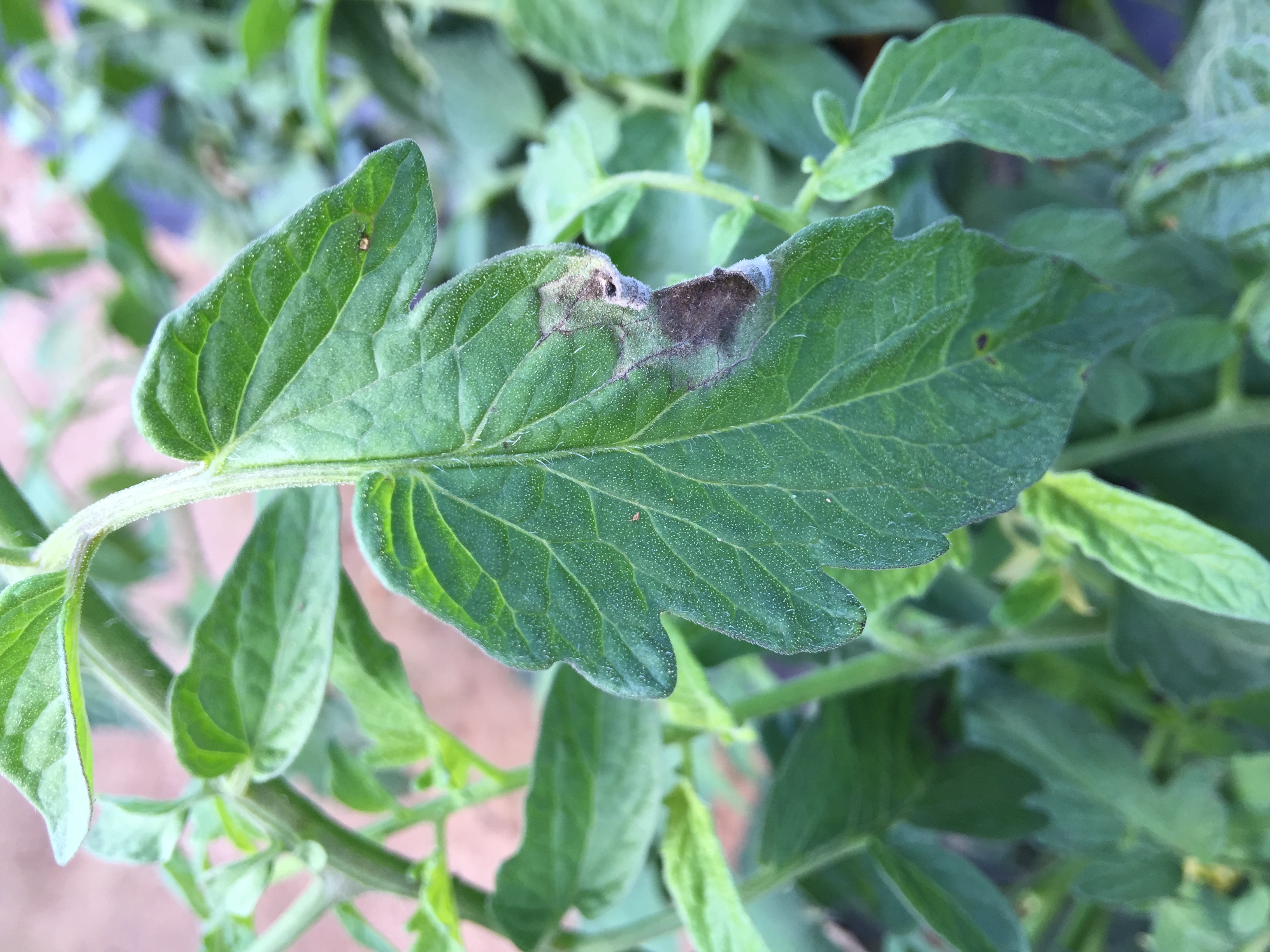
- TOMATO LATE BLIGHT FULL
- TOMATO LATE BLIGHT CODE
The map location and other evidence indicated that this resistance locus was different from the previously reported resistance locus Rpi1 on the same chromosome from S.

Using the genomic sequence data of potato, we estimated that the physical distance of the nearest marker to the resistance gene was about 27 kb. This new gene, flanked by the RFLP-derived marker SpT1756 and AFLP-derived marker SpAFLP2 with a minimal genetic distance of 0.8 cM, was mapped to potato chromosome 7. infestans, for which race specificity has not yet been demonstrated.
TOMATO LATE BLIGHT FULL
The Rpi2 locus confers full resistance to complex isolates of P. Here, we describe a new single dominant resistance gene, Rpi2, from the Mexican diploid wild species Solanum pinnatisectum that confers high level and broad spectrum resistance to late blight. Late blight, caused by the pathogen Phytophthora infestans, is one of the most devastating diseases of potato.
State Key Laboratory of Crop Stress Biology for Arid Areas, College of Agronomy, Northwest A&F University, Yangling, China. Remember, the label is the law.Le Yang †, Dongdong Wang †, Yong Xu, Hua Zhao, Lei Wang, Xiaoli Cao, Yue Chen * and Qin Chen * And observe the number of days between pesticide application and when you can harvest your crop. Be sure that the plant you wish to treat is listed on the label of the pesticide you intend to use. Always follow the pesticide label directions attached to the pesticide container you are using. Rotate fungicide groups and/or tank mix fungicides to avoid producing fungicide-resistant isolates.ĬAUTION: Mention of a pesticide or use of a pesticide label is for educational purposes only. For a current list of fungicides for late blight management visit the Midwest Vegetable Production Guide. Fungicides specific to water molds must be used and applications repeated according to label instructions. Phytophthora infestans is a water mold and not a true fungus. Fungicide applications should be made prior to infection when environmental conditions favor disease to be the most effective.  Products are available for management of late blight on tomatoes and potatoes. Under ideal conditions, such as a greenhouse, petunia also may become infected. The host range is typically limited to potato and tomato, but hairy nightshade ( Solanum physalifolium) is a closely related weed that can readily become infected and may contribute to disease spread. Many clonal lineages affect both tomato and potato, but some lineages are specific to one host or the other.
Products are available for management of late blight on tomatoes and potatoes. Under ideal conditions, such as a greenhouse, petunia also may become infected. The host range is typically limited to potato and tomato, but hairy nightshade ( Solanum physalifolium) is a closely related weed that can readily become infected and may contribute to disease spread. Many clonal lineages affect both tomato and potato, but some lineages are specific to one host or the other. TOMATO LATE BLIGHT CODE
These are called clonal lineages and designated by a number code (i.e.
There are many different strains of P. These sporangia easily become air-borne, resulting in prolific spread of the pathogen. infestans can infect and produce thousands of sporangia per lesion in less than five days. Overwintering in a tomato production system is unlikely but infected tomato fruits may give rise to infected volunteer seedlings the following season. infestans can overwinter in Minnesota if protected in potato cull piles. The most common routes of introduction each season are infected potato seed tubers, infected tomato transplants shipped in from other regions, or windblown sporangia (asexual spores) from the south that then infect fields and circulate locally. Late blight doesn’t appear in Minnesota every year. 
Prolonged hot dry days can halt pathogen spread. Late blight favors cool (60☏ to 70☏), damp conditions.
 Late blight ( Phytophthora infestans) is a water mold. Infected potato tubers become discolored (anywhere from brown to red to purple), and infected by secondary soft rot bacteria. In high humidity, thin powdery white fungal growth appears on infected leaves, tomato fruit and stems. Spots may become mushy as secondary bacteria invade. In tomatoes, firm, dark brown, circular spots grow to cover large parts of fruits. In cool, wet weather, entire fields turn brown and wilted as if hit by frost. Stem infections are firm and dark brown with a rounded edge. Infections progress through leaflets and petioles, resulting in large sections of dry brown foliage. Leaves have large, dark brown blotches with a green gray edge not confined by major leaf veins. Late blight infects leaves, stems and fruit
Late blight ( Phytophthora infestans) is a water mold. Infected potato tubers become discolored (anywhere from brown to red to purple), and infected by secondary soft rot bacteria. In high humidity, thin powdery white fungal growth appears on infected leaves, tomato fruit and stems. Spots may become mushy as secondary bacteria invade. In tomatoes, firm, dark brown, circular spots grow to cover large parts of fruits. In cool, wet weather, entire fields turn brown and wilted as if hit by frost. Stem infections are firm and dark brown with a rounded edge. Infections progress through leaflets and petioles, resulting in large sections of dry brown foliage. Leaves have large, dark brown blotches with a green gray edge not confined by major leaf veins. Late blight infects leaves, stems and fruit








 0 kommentar(er)
0 kommentar(er)
